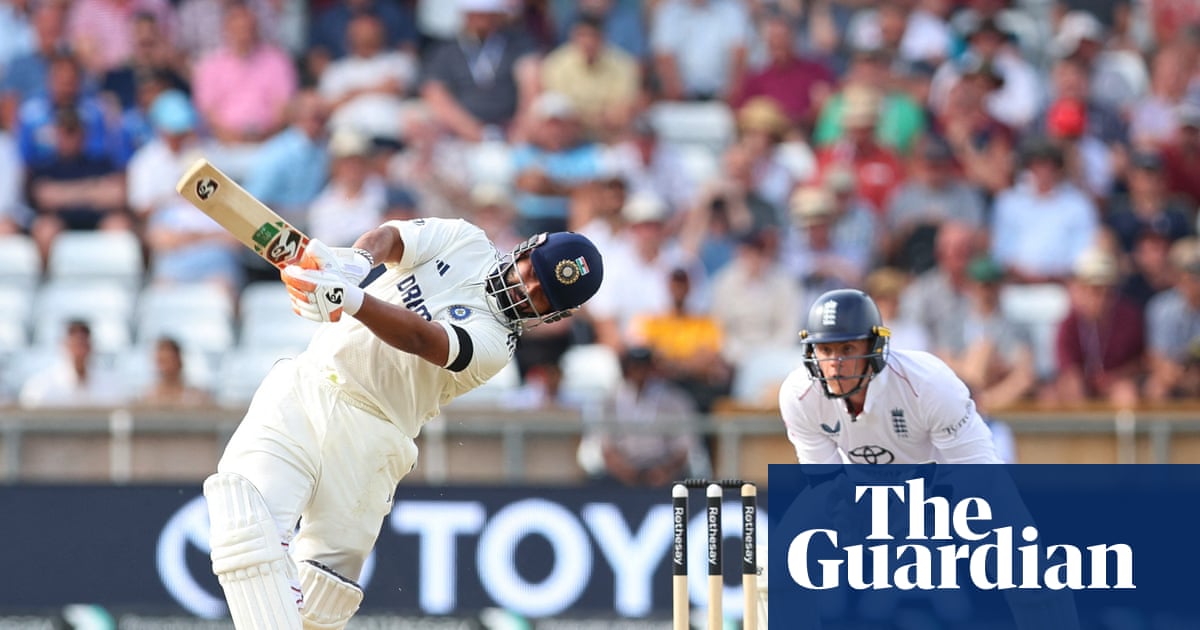Six, six, six, six, six, six. The perfect over for a batter but for a bowler a double dose of the devil’s number and the ultimate humiliation. “My brain had turned to fuzz,” says Stuart Broad of 19 September 2007 whenYuvraj Singh took him for 36 runsat Kingsmead in Durban. England had already crashed out of the inaugural T20 World Cup and a 21-year-old Broad suffered a colossal prang to his pride, the events of that night for ever changing him as a bowler.
England’s match against India was the second in a double-header. The game before ran over and cut into the preparation time for the second. “I marked my run-up at the end I was starting from, but either forgot or didn’t have time to mark it at the other end. I’d also never really done any death bowling. I think maybe Colly [Paul Collingwood, the England T20 captain] had messed up the overs and he was like: ‘You are back on to bowl now.’”
Yuvraj was on strike and had just had a heated altercation with Andrew Flintoff after hitting his fellow all-rounder for a couple of boundaries in the previous over. With tempers significantly flared the umpires had to intervene. Yuvraj took out his temper on Broad and, more specifically, the white ball in his hand.
Broad had to mark out his run-up in a hurry. “Immediately, I felt a sense of panic. I wasn’t looking at my field, who I was bowling to or what I was going to bowl. I was out of kilter. I decided to try to bowl yorkers. I got the first one wrong. The second one wrong. I didn’t try to change it up at all.”
After the first three balls went the distance, Collingwood suggested his bowler go around the wicket, but Broad was so wet behind the ears he had not really done it before, a grim irony considering his success around the wicket to left-handers subsequently. A full toss came out and was duly dispatched. A few moments later Yuvraj and Broad would be for ever minted on the double-edged coin of cricketing history.
“It definitely changed me,” Broad says. “I knew what the worst day felt like and I had a wake-up call very early. I became more gritty, more steely after that night. I implemented a routine I then did for every single over I bowled since.”
Is he almost glad it happened? “No,” he says with a firm shake of his head. “I’d rather it had never happened, but I’m glad I used it and learned from it.”
A handful of players know what it feels like to be clattered over the ropes six times in a row in professional cricket. Unlike Broad, some seemingly have not been able to fully exorcise their experience. I tracked a number of bowlers/victims down and most politely declined to discuss their experiences.
Broad was able to shake his off and go on to greater things. For most, though, their names are linked to an event when their abasement enables an astonishing feat.
“I sensed that it was on after a couple. I then flat-batted the third ball for six. After the fourth it was clear he’d lost it.” Herschelle Gibbs gives a throaty chuckle down the phone from Cape Town. He was the first man to hit six sixes in international cricket. The Netherlands’ Daan Van Bunge was the obliterated bowler in a 2007 World Cup match in Basseterre. Gibbs agrees there is an egotistical element to hitting six sixes. “It’s cat and mouse between batter and bowler and it ends in an absolute mauling.”
After the fifth six his batting partner, Jacques Kallis, came down the wicket and suggested Gibbs “could take it easy now”. Gibbs still sounds incredulous at the memory. “Maybe that shows the difference between me and Jacques. I was always going to go for the final one.”
Sign up toThe Spin
Subscribe to our cricket newsletter for our writers' thoughts on the biggest stories and a review of the week’s action
after newsletter promotion
Despite the gym-honed physiques and soft-pressed blades of the modern era where sixes have become routine and pepper the stands the world over, the six sixes feat has never happened in a Test. More than that, no one has come close – four consecutive sixes have been hit three times. Some compare the feat to the nine-dart finish or snooker’s 147 break but the Test Match Special statistician, Andy Zaltzman, sees it differently and explains why the achievement might not occur in a Test any time soon. “The 147 and the nine-darter are the logical results of doing something perfectly, whereas six sixes requires an effort to do something extraordinary, the risks of doing which don’t generally make strategic sense in Test cricket,” he says.
We shouldn’t put a flutter on Harry Brook, Ben Stokes or Rishabh Pant doing it this summer then? “Since June 2022, sixes have been hit, on average, once per 155 balls in Tests. Obviously, it doesn’t quite work like this, but that suggests the likelihood of hitting three sixes in a row is one in approximately 3.7m and hitting six in a row one in 13.7 trillion.”
You always hear it, Test cricket – it’s a bowler’s game. For the time being, one of cricket’s remaining Everests remains unclimbed, but you suspect a few might be capable of a tilt at the six-hitting summit.
This is an extract from the Guardian’s weekly cricket email, The Spin.To subscribe, just visit this page and follow the instructions.
